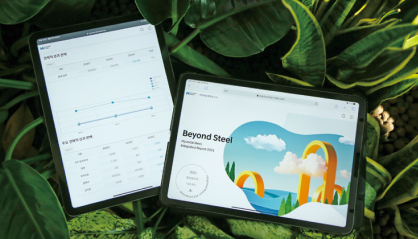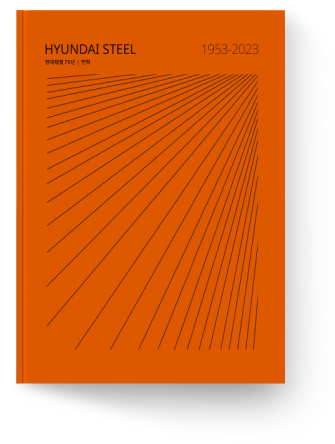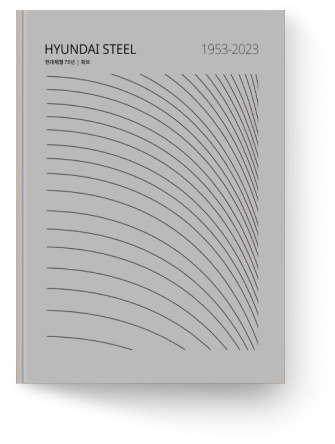History & Story
In the 1950s, South Korea’s industry and production facilities were largely destroyed during the Korean War, leaving major cities in a state that resembled ruins. The steel industry also faced a decline due to a shortage of raw materials and energy. Despite these challenges, efforts were made to revive the steel industry in South Korea. In June 1953, through the efforts of a few pioneers who brought design blueprints and materials even during the evacuation, along with the government’s recognition of the need to rebuild South Korea's steel industry, the state-owned enterprise Korea Heavy Industries Corporation was established. This marked the beginning of the full-fledged revival of the steel industry.
Established as state-owned Korea Heavy Industry Corporation
-
Jun.1953
Establishment of Korea Heavy Industry Corporation
Korea Heavy Industries Corporation held its first board meeting on June 10, 1953, in a temporary office in Busan, its evacuation site, and designated this day as the company’s founding anniversary. The company was named ‘Korea Heavy Industries Corporation.’

-
Nov.1962
Renamed as Incheon Heavy Industry Co., Ltd.
-
Sep.1964
Establishment of Incheon Steel Co., Ltd. (dual operating system)
-
Apr.1970
Establishment of Incheon Steel
The establishment of Incheon Steel was significant for adopting a Korean-style steel industry model that maximized the use of domestic resources. It also proposed a direction to contribute to the domestic steel supply in a short period of time by using a new steelmaking method instead of relying on large blast furnaces, despite having limited capital.
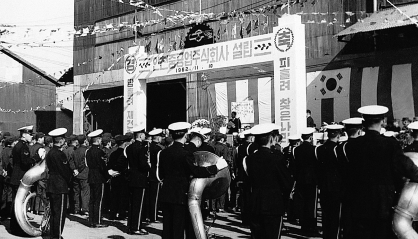
Following the success of the First Five-Year Economic Development Plan in the 1960s, the Second Plan focused on the development of heavy and chemical industries as a key priority. With the enactment of individual industrial promotion laws, such as the Railroad Logistics Industry Development and Support Act, the development of the steel industry - vital for the foundation of all other industries - became a crucial task for the industrial advancement of Korea. However, despite the continuous expansion of Incheon Steel and the completion of the Pohang Steelworks, the steel industry continued to suffer from chronic supply shortages, with domestic demand being severely unmet, let alone fulfilling export needs. As a result, the construction of a new integrated steelworks became a priority in 1977, and Hyundai Group established Hyundai Integrated Steel Company to begin preparations for building the second steelworks.
Re-establishment as a member of the Hyundai Group
-
1978
Government’s push for privatization of state-owned enterprises
Despite the expansion of Incheon Steel and the completion of the Pohang Steelworks, the industry continued to struggle with chronic supply shortages. In response, the government announced in early 1978 that it would privatize four companies, including Incheon Steel, which had shown improved management performance among the seven companies funded by the Korea Development Bank.
-
May.1978
Acquisition of Incheon Steel by Hyundai Group
In May 1978, with Hyundai Group securing management rights of Incheon Steel, which had been owned by the Korea Development Bank, Incheon Steel began anew as a subsidiary of Hyundai Group, with Hyundai Heavy Industries as its parent company.
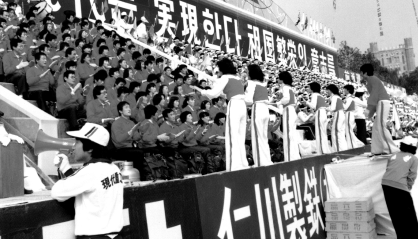
-
Mar.1982
Commencement of operations at the H-section steel plant
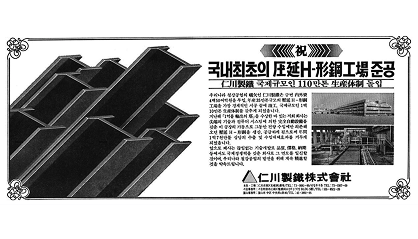
-
May.1987
Initial public offering
-
Sep.1990
Completion of expansion of 120,000 ton stainless steel cold rolling plant
-
Oct.1992
Membership in the International Iron and Steel Institute as a full Member
Management innovation and facility expansion
-
Dec.1994
Ranked as the world’s No. 1 electric arc furnace single Plant
The completion of a 90-ton electric arc furnace steelmaking plant and the second rebar plant boosted crude steel production capacity to 3.7 million tons, generating an import substitution effect worth approximately 18 million dollars annually. This also led to significant increases in annual sales, surpassing 98 billion Korean won, and profits exceeding 14 billion Korean won. With this achievement, Incheon Steel established itself as the fourth-largest electric arc furnace producer in the world by crude steel volume and the largest single plant in the world.
-
Mar.1998
Completion of the 120-ton electric steelmaking plant and the new medium-sized rolling mill
The 1997 IMF financial crisis was enough to shake the entire industrial landscape of South Korea. In particular, the steel industry faced major turmoil, as even solid companies found themselves on the brink of bankruptcy due to excessive facility investment and oversupply caused by incorrect demand forecasts in the early 1990s. Incheon Steel also faced difficulties such as domestic contraction and poor exports during the currency crisis, but it could not afford to halt investments in preparation for future market changes. Above all, driven by a long-standing commitment to the steel business at the group level, Hyundai Steel began its expansion in March 2000 with the acquisition of Kangwon Industries. This was followed by the acquisition of Sammi Specialty Steel at the end of the same year, and in 2004, it acquired the Hanbo Steel Dangjin Plant, playing a pivotal role in the restructuring of South Korea’s steel industry.
Expansion of business through leadership in steel industry restructuring
-
1999
Strategies for business expansion
Around 1999, after overcoming the currency crisis, the company began to expand aggressively, taking bolder steps than other enterprises. It was possible because the company pursued management innovation and quality management, turning the crisis into an opportunity for qualitative growth.
-
Dec.1999
Establishment of Qingdao Hyundai Machinery Co., Ltd.
-
Mar.2000
Incheon Steel’s aggressive expansion began with the acquisition of Kangwon Industries, which was struggling due to severe financial difficulties. This marked a commitment to lead the restructuring of the steel industry, a national issue, contributing to its development, and expressing the intent to leap forward as a global steel enterprise.
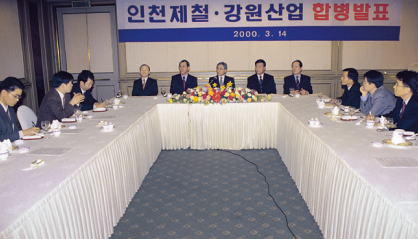
-
Dec.2000
Merger and acquisition of Sammi Specialty Steel Co., Ltd.
By acquiring Sammi Specialty Steel, Incheon Steel, which had been actively investing in the specialty steel sector and expanding production facilities, was able to eliminate redundant investments in facilities, restructure its portfolio, and reduce logistics costs.
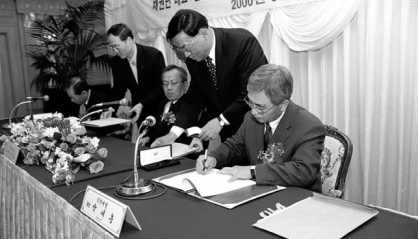
New start as a member of Hyundai Motor Group
-
Apr.2001
Launch of Hyundai Motor Group and Inclusion of affiliates
After separating from Hyundai Group, Incheon Steel was re-launched in April 2001 as a member of Hyundai Motor Group, alongside Hyundai Motors and Kia.
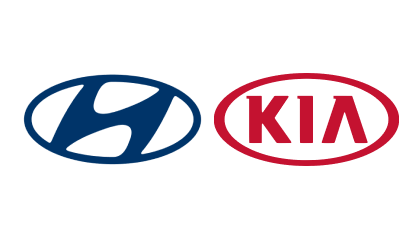
-
Jul.2001
Renamed as INI STEEL
Incheon Steel decided to establish a new company name suitable for the global environment. Based on more than a year of discussions, INI STEEL was confirmed as the new company name.
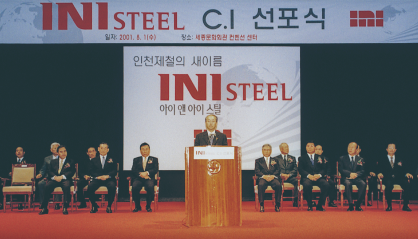
The great journey of constructing integrated Steelworks
-
2004
The prelude to the great journey
The construction of the integrated steelworks was a long-standing aspiration of the group that began with the late Chairman Chung Ju-yung. While demonstrating global competitiveness in industries such as automotive, construction, and heavy industries, it was unfortunate that the group could not directly produce steel, a key material for these businesses. Chairman Chung Mong-koo decided to construct the integrated steelworks, considering both the national economic perspective and the business strategy of Hyundai Motor Group.
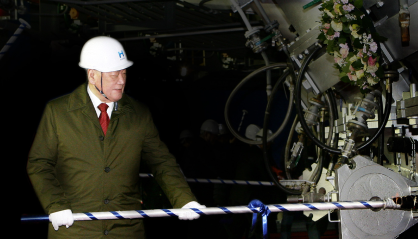
-
Sep.2004
Acquisition of Hanbo Steel and reignition of the integrated steelworks
The acquisition of Hanbo Steel marked a shift in the hot-rolled market, previously monopolized by POSCO, signaling a seismic change in the domestic steel market.
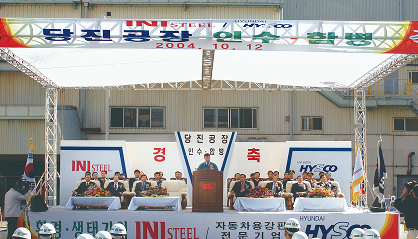
-
Mar.2005
Commencement of commercial production at the Dangjin hot plate rolling mill
-
Mar.2006
Renamed as “Hyundai Steel”
Before actively pursuing the construction of the Dangjin integrated steelworks, the company changed its name to ‘Hyundai Steel Co., Ltd.’ for the purpose of comprehensively revitalizing the organization and launched a new corporate identity (CI).
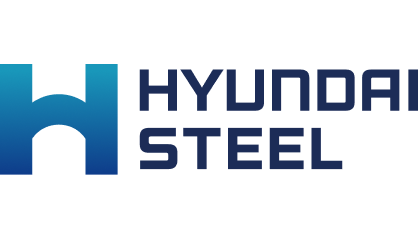
-
Oct.2006
Groundbreaking ceremony for the integrated steelworks
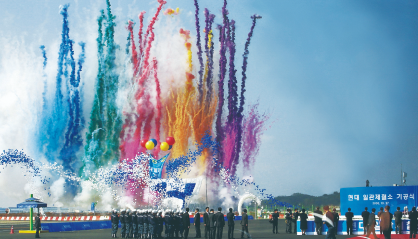
-
2007
Commitment to Steelworks Construction
From the outset of planning the construction of the integrated steelworks, Hyundai Steel had a firm policy of building the world’s best steelworks. While one of the company’s fundamental policies was to implement ‘environmental management,’ it was also seen as an important factor in coexistence with the local community to dispel concerns about environmental pollution.
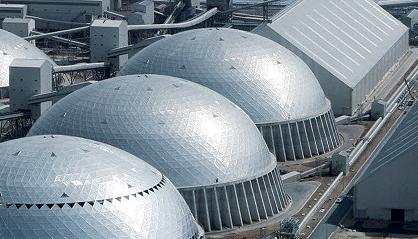
Opening of the integrated steelworks era
-
Jan.2010
Operation of the first integrated steelworks in the private sector
The year 2010 was a transformative year in the history of Hyundai Steel, marked by changes greater and more significant than any in the past. Six years after establishing the plan for the integrated steelworks construction, the operation of the integrated steelworks commenced. On January 5, 2010, Hyundai Steel held the ‘First Blast Furnace Tapping Ceremony’ at the integrated steelworks with the attendance of over 600 participants, including Chairman Chung Mong-koo, and finally declared the beginning of the ‘Blast Furnace Era.’
-
Apr.2010
Completion ceremony for the integrated steelworks
-
Nov.2010
Blow-in ceremony for Blast Furnace No.2 at the integrated steelworks
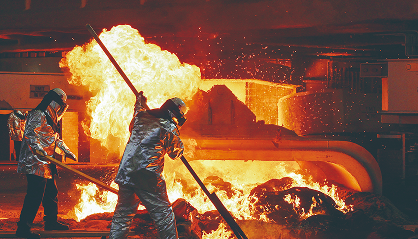
-
Nov.2010
Entry into global top 10 with the operation of the Blast Furnace No.2
On November 23, 2010, the blow-in ceremony for Blast Furnace No.2 was held. As a result, Hyundai Steel secured an additional production capacity of 8 million tons by combining the existing electric arc furnace capacity of 12 million tons with 6.5 million tons of hot rolled steel and 1.5 million tons of plate from the first and second blast furnaces, achieving a total crude steel production capacity of 20 million tons and ranking among the top 10 integrated steel companies in the world.
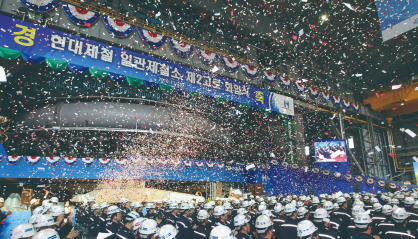
-
Apr.2011
Groundbreaking ceremony for the Blast Furnace No.3 at the integrated steelworks
-
Sep.2013
Construction of the Blast Furnace No.3 and acquisition of Hyundai Hysco’s Cold Rolled Steel Division
On September 13, 2013, the Blast Furnace No.3, completed after 29 months of construction, proudly revealed its presence. After successfully concluding the monumental project of constructing the integrated steelworks over a span of seven years, the company merged with Hyundai Hysco’s cold rolled steel manufacturing and sales division at the end of the year, thereby completing a fully integrated steelworks that produces from molten iron to hot rolled and cold rolled steel.
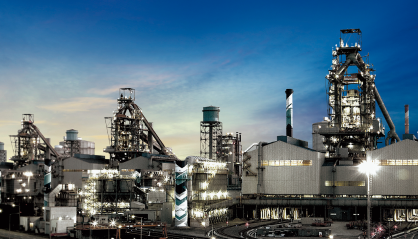
Hyundai Steel has become the only affiliate within the Hyundai Motor Group with hydrogen production capabilities, committing to support the group’s vision and accelerate the arrival of the hydrogen era. Hyundai Steel began the construction of its hydrogen plant in 2014 and started commercial production in January 2016. As of October 2021, the plant produced 35 million tons of hydrogen annually. Based on the NEXO, which can travel 609 km on a single charge of 6.33 kg of hydrogen, assuming it drives 20,000 km annually, this amount of hydrogen production could support 17,000 vehicles operating throughout the year.
Strengthening the profile of a specialty steelworks for automotive steel plates
-
2014
Completion of integrated steelworks through the merger with Hyundai Hysco
Hyundai Steel recorded its highest-ever annual sales in 2014, surpassing 16 trillion won, with an operating profit of over 1.4 trillion won. The rapid stabilization of operations under the three-basket furnace system and the diversification of the product portfolio toward high-value-added steel products through the acquisition of the cold-rolled division were the results of these efforts. In addition, it was due to the synergies created by cost reduction and improved work efficiency from the integrated management of upstream and downstream processes.
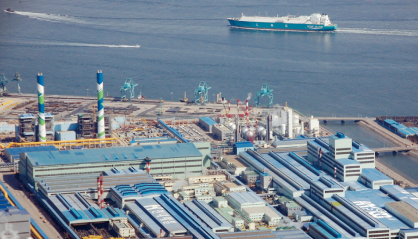
-
Apr.2014
Groundbreaking ceremony for the special steel plant
-
Jul.2015
Comprehensive completion of the integrated steelworks and declaration of ‘Vision 2025’
The comprehensive completion of Hyundai Steel’s integrated steelworks was expected to provide new vitality to the recovering economy. The import substitution effect of high-quality steel products is expected to improve the trade balance, positively impacting the national economy as a whole, and particularly contributing to enhancing the competitiveness of related demand industries such as automotive and shipbuilding. In addition, Hyundai Steel declared ‘Vision 2025’ on July 14, 2015, with the slogan “Engineering the Future beyond Steel.” It clarifies the corporate identity of Hyundai Steel, which has led the development of national key industries for over 60 years, and expresses the intent to move toward becoming a “value-creating company based on integrated materials,” with the steel business as a core focus.
-
Oct.2015
Completion of the special steel plant
Leading the establishment of a hydrogen economy and achieving carbon neutrality
-
2016
Development of group hydrogen strategy and hydrogen business
Hyundai Steel has become the only affiliate within the Hyundai Motor Group with hydrogen production capabilities, committing to support the group’s vision and accelerate the arrival of the hydrogen era. In line with the group’s ‘Hydrogen Vision 2040,’ Hyundai Steel has accelerated its role as a hydrogen supplier, focusing on core raw materials and related component businesses. Considering that Hyundai Steel began mass production of the NEXO in 2018 as a hydrogen fuel cell vehicle platform, it has been in step with Hyundai Motor Group's transition to a hydrogen energy paradigm from the very beginning.
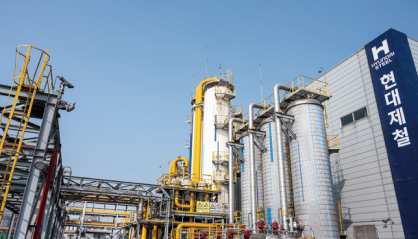
-
Nov.2017
Launch of earthquake-resistant steel brand H CORE
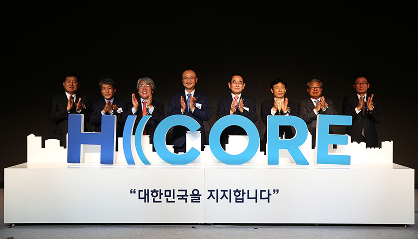
-
2019
Leading ESG management in the steel Industry
Since 2019, Hyundai Steel has focused on enhancing its operational system by establishing acomprehensive ESG strategy. Globally, ESG management has emerged as a critical factor determining the survival or downfall of companies, necessitating a more proactive response. Furthermore, it is believed that by implementing ESG practices for the true sustainability of our society, it would be possible to secure new future growth drivers.

-
Apr.2019
Launch of automotive steel solutions brand H-SOLUTION

Sustainable integrated steelworks
-
2021
Major paradigm shift in steelmaking and establishment of carbon neutrality foundations
In response to rapid policy changes and the demands for ESG management both domestically and internationally, Hyundai Steel identified key management issues across all areas of environment and energy, and established strategic responses by quantifying risks. Based on this, task force teams (TFTs) were formed in various fields such as technology, production, operations/management, policy, and business strategy to identify and manage short-term tasks for achieving carbon emission reduction targets by 2030, while simultaneously developing mid- to long-term strategies and responses to policies.
-
Apr.2023
Publication of the carbon neutrality roadmap
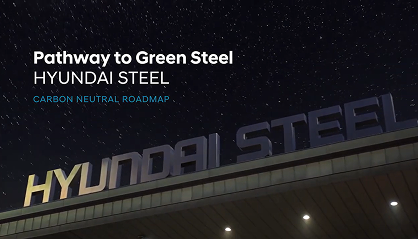
-
2024
A dream toward a sustainable integrated steelworks
Hyundai Steel is envisioning a new blueprint filled with challenges and hope. In the face of the climate change crisis and the era of carbon neutrality, Hyundai Steel dreams of producing molten iron using hydrogen. A path that must be walked further and longer than the journey that has already been traveled. Dreaming of a new future toward a sustainable integrated steelworks.
